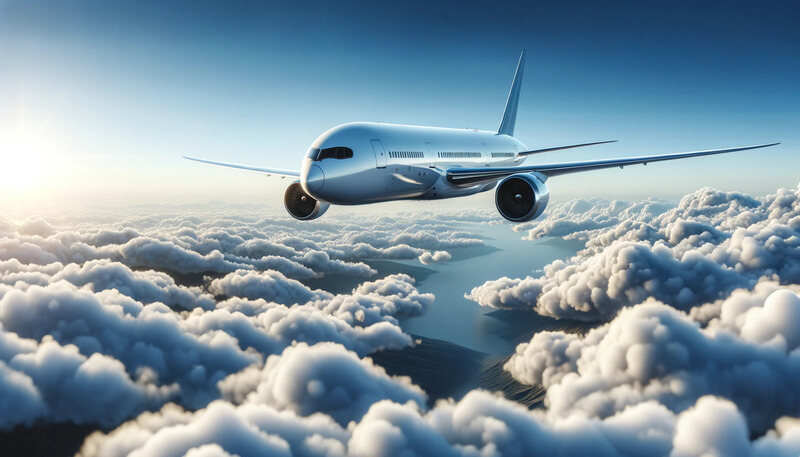Thursday, February 29, 2024

In an extensive safety discussion held at FAA Headquarters on Tuesday, FAA Administrator Mike Whitaker conveyed to senior Boeing executives the imperative for the aircraft manufacturer to formulate a thorough action plan. This plan is aimed at rectifying its pervasive quality-control issues to align with the FAA’s unwavering safety standards, emphasizing their non-negotiable nature.
“Boeing must commit to real and profound improvements,” Administrator Whitaker said following the meeting with Boeing Chief Executive Officer and President Dave Calhoun and his senior safety team. “Making foundational change will require a sustained effort from Boeing’s leadership, and we are going to hold them accountable every step of the way, with mutually understood milestones and expectations.”
Administrator Whitaker communicated to Boeing the expectation that the company furnishes the FAA with a comprehensive action plan within a 90-day timeframe. This plan is to encompass the forthcoming outcomes of the FAA production-line audit and the latest insights from the expert review panel report, mandated by the Aircraft Certification, Safety, and Accountability Act of 2020.
Additionally, the plan is required to delineate the measures Boeing intends to implement to enhance its Safety Management System (SMS) program, a commitment made in 2019. Boeing is further tasked with integrating its SMS program with a Quality Management System. This integration aims to ensure consistent rigor and oversight across the company’s suppliers, facilitating a measurable, systemic enhancement in manufacturing quality control.
“Boeing must take a fresh look at every aspect of their quality-control process and ensure that safety is the company’s guiding principle,” Administrator Whitaker said.
Boeing Oversight Activities Update
On February 12, Administrator Whitaker visited Boeing’s factory floor in Renton, Washington, to observe the 737 production line and engage directly with Boeing personnel, including engineers and mechanics, to discuss quality control processes. Additionally, discussions took place at the Alaska Airlines headquarters regarding the incident involving Alaska Airlines Flight 1282’s left mid-cabin door plug on January 5.
The FAA has taken several measures concerning Boeing, including pausing the expansion of Boeing 737 MAX production, considering third-party oversight for Boeing operations, and conducting an enhanced oversight audit of Boeing’s production and manufacturing quality systems, which is nearing completion. Simultaneously, an investigation into alleged noncompliance by Boeing is underway.
January 17, 2024
Following the grounding of 171 Boeing 737-9 MAX airplanes, the FAA is intensifying its scrutiny of Boeing’s manufacturing practices and production lines, including those involving Spirit AeroSystems, a subcontractor. The FAA is also exploring potential system changes to bolster oversight of Boeing operations.
Recently, the FAA announced stringent requirements for inspection and maintenance processes as prerequisites for any potential return of Boeing 737-9 MAXs to service. Initial inspections have been completed, and data from these inspections will undergo thorough review by the FAA. Pending this review, all 737-9 MAX aircraft with door plugs will remain grounded. The FAA emphasizes that the safety of the flying public takes precedence over expediency in determining the timeline for returning these aircraft to service.
The FAA is actively supporting the National Transportation Safety Board’s investigation into Alaska Airlines Flight 1282, deferring to the NTSB for updates on the investigation’s progress.
January 11, 2024
In response to recent incidents, the FAA has initiated an investigation into Boeing’s compliance with safety regulations and adherence to approved design standards. Boeing has been formally notified of this investigation, which stems from concerns about product conformity and safety. The FAA underscores the necessity for Boeing’s manufacturing practices to align with stringent safety standards.
The timeline for returning the Boeing 737-9 MAX to service will be determined solely by safety considerations, not by expediency.
January 9, 2024
All Boeing 737-9 MAX aircraft with plug doors will remain grounded until the FAA verifies their safety for operation. Boeing is required to furnish operators with instructions for inspections and maintenance, with the FAA conducting a thorough review upon receipt of revised instructions from Boeing.
Once again, the FAA emphasizes that the safety of the flying public is paramount in deciding when to return the Boeing 737-9 MAX to service.
January 8, 2024
The FAA has approved a method to address the Boeing 737-9 MAX emergency airworthiness directive and has disseminated it to affected operators.
All Boeing 737-9 MAX aircraft will remain grounded until operators complete enhanced inspections of cabin door exit plugs, components, and fasteners, along with necessary corrective actions. The FAA reiterates its commitment to supporting the NTSB’s investigation into Alaska Airlines Flight 1282.
January 7, 2024
The FAA’s foremost priority is ensuring the safety of the flying public. Accordingly, affected Boeing aircraft will remain grounded until deemed safe by the FAA.
January 6, 2024
The FAA issued a temporary grounding order for certain Boeing 737-9 MAX aircraft operated by U.S. airlines or within U.S. territory.
“The FAA is requiring immediate inspections of certain Boeing 737-9 MAX planes before they can return to flight,” FAA Administrator Mike Whitaker said. “Safety will continue to drive our decision-making as we assist the NTSB’s investigation into Alaska Airlines Flight 1282.”
The Emergency Airworthiness Directive (EAD) mandates that operators conduct inspections on affected aircraft prior to resuming flights. Each inspection is estimated to require approximately four to eight hours per aircraft.
This directive will impact approximately 171 airplanes globally.
Saturday, April 27, 2024